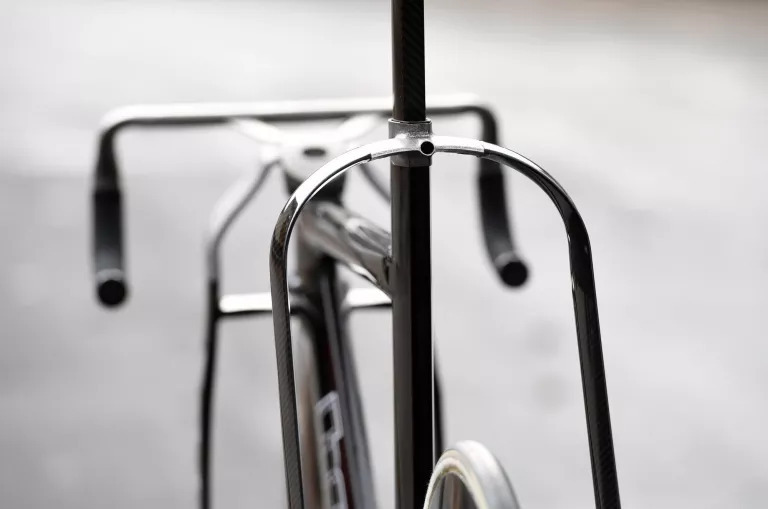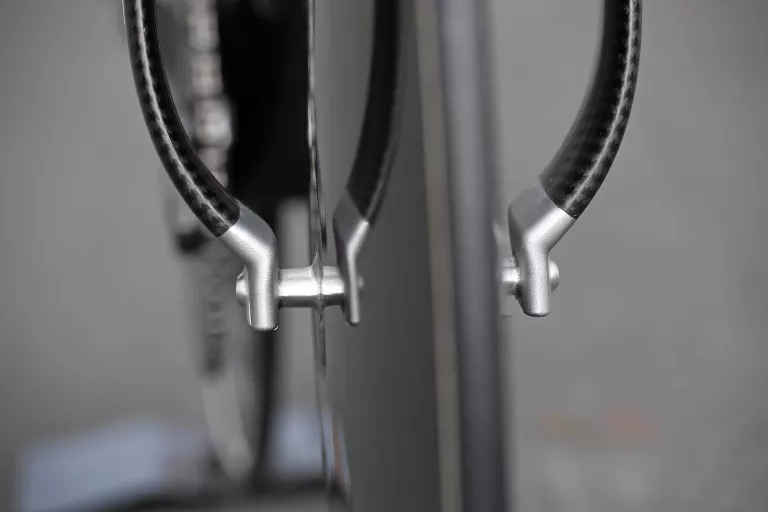Team GB athletes react to the revolutionary Hope/Lotus Olympic track bike in a new film
Lotus film captures Team GB riders training for the Tokyo Olympics on the new track bike


With the Tokyo Olympics less than a month away, Great Britain Cycling Team riders who will be using the Hope/Lotus track bike in their quest for gold have been speaking about what it’s like to ride the revolutionary machine.
Read more: Team GB's Hope x Lotus HB.T track bike in detail
In a new film by Lotus, Rio 2016 Olympic gold medal winner Katie Archibald, Ethan Vernon and Jack Carlin give their impressions from the National Cycling Centre in Manchester where they’re putting the finishing touches to their form.
According to Carlin, when fractions of a second are the difference between winning and losing, this innovative new bike could give him that edge: “The prestige that Lotus brought from the old bike… I think everyone knows it’s going to perform well and do the job.”
Meanwhile Vernon notes it’s so different from anything else the other bike manufacturers have produced, but “it all makes sense when you break it down.”
Archibald speaks about the thrill she felt when she saw the uniquely wide fork design and seatstays and how the Lotus name – with its history in Olympic track cycling – resonates.
Around 40 people were involved in the development of the machine, including several veterans who made up the design team for the UK Sports Institute (UKSI) bike raced to victory time and time again in 2004, 2008 and 2012.

The design is based on optimising the aerodynamics of the bike and the rider; the position of the forks means they’re directly in front of the rider’s knees, helping air to flow around the rider. The seat stays at the rear of the bike, also wider than usual, assist with the reattachment of that air to create the best possible profile for the bike and rider together.
BC’s technical director Tony Purnell, talking to Cycling Weekly last January before the pandemic, explained that the initial concept came from a searching for space for creativity within the UCI rulebook.
“We knew we had to create something really special. But the rules were pretty restrictive. There was almost nothing we could do. We realised the only scope [for creativity] was that there were no real width restrictions.”
There is a finite limit – but at 50cm, it gave the design group quite a lot of space to play with.
Consequently the bike features wide forks and seatstays to align with the rider’s legs with the goal of channelling air more efficiently.
There are several factors involved in the aerodynamic difference between this bike and others – for example, since the seatstays are designed to mirror the rider’s legs, the Hope/Lotus bike will be more effective for some than others. However, estimations suggest it will be around 2-3% faster than previous track bikes.
“We effectively tested two ends of the spectrum,” said Hope design engineer Sam Pendred. “We tested riders with size 12 feet, and people with different cleat positions, to make sure that the two extremes of physiology can be catered for in this design.”
While that 2-3% advantage could be massive, a lot of the boost will go on in the heads of others, according to Purnell. “We know that getting any tangible performance [gain] is going to be very difficult at this point in bike design... but just having something that’s strikingly different [could] go down very well because there’s a lot of psychological wars that go on.
“If other nations are gazing at something that’s caused a lot of flap in the cycling world then they might just feel a tad envious.”
Also riding it in Tokyo will be husband-and-wife team Jason Kenny and Laura Kenny, who are hoping to make history by confirming themselves as the most successful female and male British Olympic track cyclists ever. Ed Clancy is aiming to win his fourth consecutive team pursuit gold medal.

Lotus has also helped to develop two designs of lightweight handlebar, sprint and pursuit, which are integrated into the front end of each bike. 3D-printed titanium and aluminium, as well as carbon fibre, were used to manufacture the components.
Lotus worked with Hope Technology, which supplied the bike’s frame and wheels, and engineering partner Renishaw.
Of course Lotus’s history in Olympic track cycling is legendary. The Lotus Type 108 – also known as the LotusSport Pursuit Bicycle – is arguably the most famous bike ever made after Chris Boardman rode it to gold in the men’s individual pursuit at the Barcelona Olympics in 1992. It was the first British medal in an Olympic cycling event for 72 years.
The Olympic track cycling takes place at the Izu Velodrome from August 2-8.

Thank you for reading 20 articles this month* Join now for unlimited access
Enjoy your first month for just £1 / $1 / €1
*Read 5 free articles per month without a subscription

Join now for unlimited access
Try first month for just £1 / $1 / €1
Get The Leadout Newsletter
The latest race content, interviews, features, reviews and expert buying guides, direct to your inbox!
Simon Smythe is a hugely experienced cycling tech writer, who has been writing for Cycling Weekly since 2003. Until recently he was our senior tech writer. In his cycling career Simon has mostly focused on time trialling with a national medal, a few open wins and his club's 30-mile record in his palmares. These days he spends most of his time testing road bikes, or on a tandem doing the school run with his younger son.
-
 A bike rack with an app? Wahoo’s latest, and a hub silencer – Sea Otter Classic tech highlights, Part 2
A bike rack with an app? Wahoo’s latest, and a hub silencer – Sea Otter Classic tech highlights, Part 2A few standout pieces of gear from North America's biggest bike gathering
By Anne-Marije Rook
-
 Cycling's riders need more protection from mindless 'fans' at races to avoid another Mathieu van der Poel Paris-Roubaix bottle incident
Cycling's riders need more protection from mindless 'fans' at races to avoid another Mathieu van der Poel Paris-Roubaix bottle incidentCycling's authorities must do everything within their power to prevent spectators from assaulting riders
By Tom Thewlis